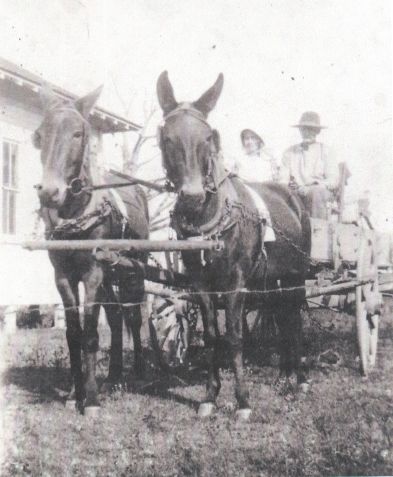
The privilege and blessing that came with owning and maintaining your own wagon back in the days before automotive power can never be accurately assessed. The necessity of the farm wagon was such that it could be reckoned a central hub of all farm life. From family transportation to seasonal work on the homestead, it’s not hard to see how it would be so heavily relied upon. The automobile seems vastly more complex when placed side-by-side with the wooden-wheeled wagon of yesterday; yet for our settler forefathers and foremothers the wagon itself was not so easily come by. They were expensive, required advanced skills to manufacture (revolving around specialized woodwork and blacksmithing), and it took a knowledgeable operator to maintain it—wheels and all—in good working order.
Even if they had managed to acquire a wood and metal set of wheels, a couple of things might render the wagon unusable for the old time farmer: 1) Accidental damage, deterioration through hard use, or bad financial times … the latter being the need to sell the wagon to meet financial obligations. 2) The work of the farm taking place on such uneven, rocky, or forested ground that a wagon would be impractical for use.
But in spite of either of these broad pair of circumstances, the functioning of the farm had to continue. Much of the time this work boiled down to moving this or that cumbersome thing (or many things) from here to there. So how did our pioneer ancestors haul things if they were hindered from using a wagon?
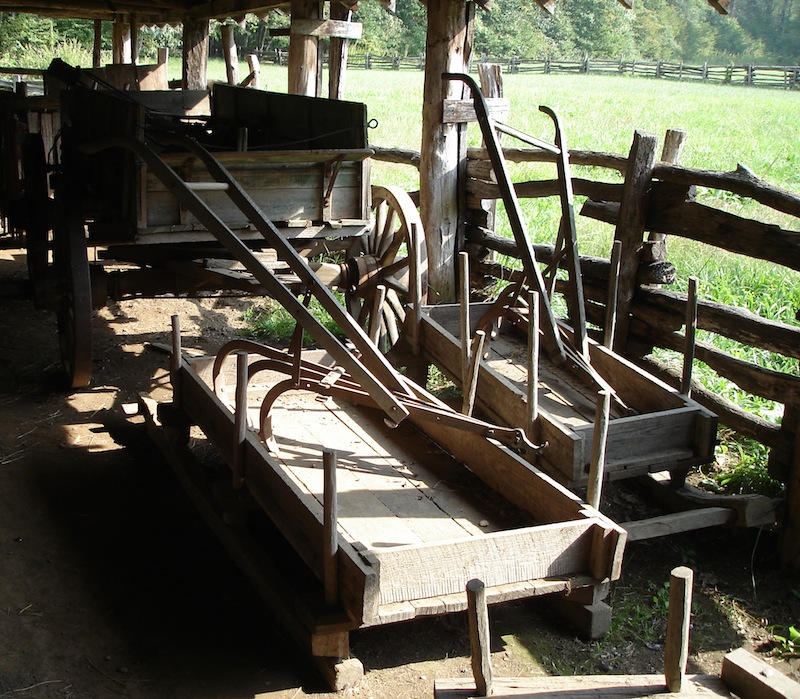
Sledding Year Round
When people conjure up common inventions, the first that usually comes to mind is the wheel. Very basic, just a circle…seems easy to have invented. But the wooden wagon wheel is a very complex invention; a marriage of steel and wood that requires constant care and attention to continue deriving benefits from (ask any wheelwright). Enter the “runner”. Now that’s a more common invention that may have preceded the wheel by weeks or days (or hours).
Sleds with runners are commonly thought as running on ice or snow. But they’ve been used for ages year round on even the rockiest or roughest of ground.
Limited Only by Imagination
From the Appalachians to the Rockies and beyond, simple folks with simple tools have crafted horse or oxen-drawn wooden sleds to fit the occasion of their need. Hauling big rocks, little rocks, fence posts, firewood, poles, hay, clay for chinkin’, dirt, compost, manure, corn, fodder, wheat sheaths, ‘tators, watermelons, you name it. The different things hauled would usually dictate the design or characteristics of the sled. Some were higher off the ground, some had sides (removable or fixed), some had tail gates (removable or fixed), some had removable standards (the part that sticks up), and some were even built in such a way as to replace worn runners after a few years of heavy use on gravelly ground. And with a little “know-how” you could even assemble the entire thing without one nail…just simple wooden pegs.
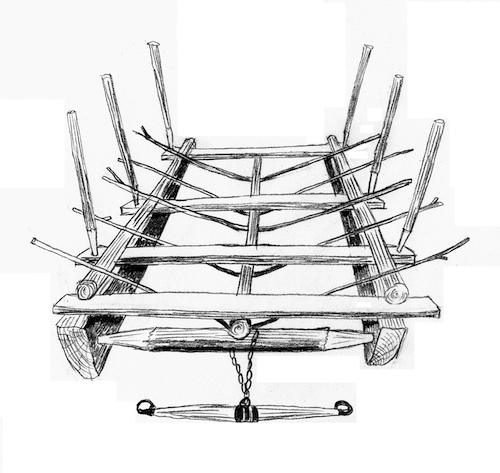
Left, long slender saplings bent under the central pole and extending out the sides would help hold large loads of loose hay from the fields to the barn yard; below left, wooden “boxing” could be either removable or permanently attached to the sled’s frame; below right, a simple lightweight design that might haul a load of long, skinny sorghum cane to the mill
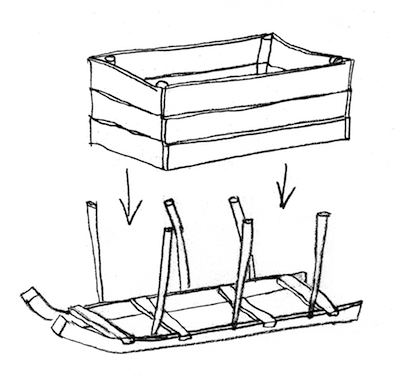

There were as many types of sleds (or “slides”, as my folks always called ‘em) as people ready and willing to construct one. Lighter sled loads, like hay or grain may have needed only small runners made from green saplings. Heavy duty sleds had large runners sometimes fashioned from sections of trees with a crooked angle, cut, and split to form the matching runners (see below). Between these runners usually lay a cross piece of some type (hewed beam, lumber, or small pole from a tree) to which the “single-tree”—the device that connected the animal power to the load—would be fastened.
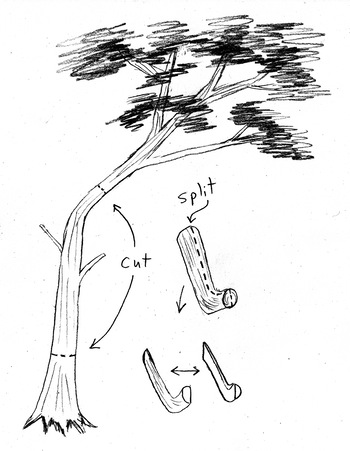
The building of such farm implements did not need to be elaborate, but if you had the skill and time, a well-made and well-designed wooden sled would last beyond the farmer’s years. Just look around at those still in existence.
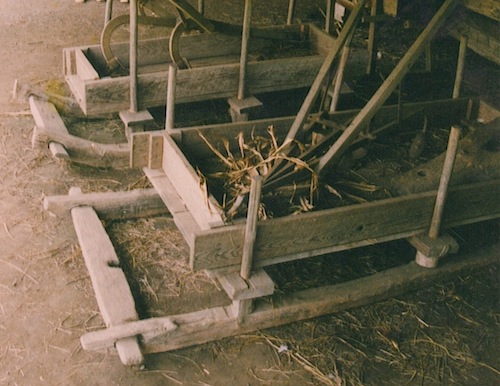
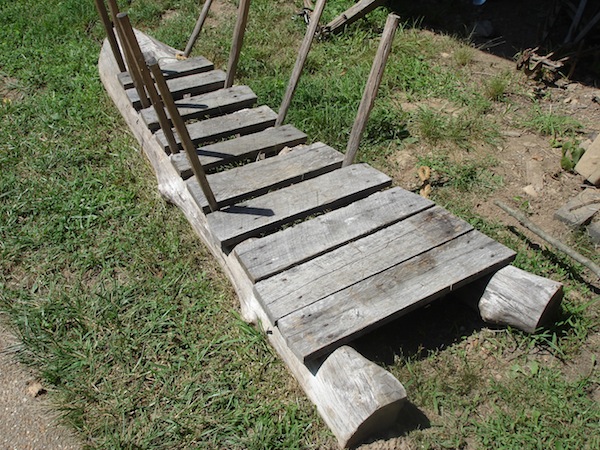
Sleds, slides, stone boats, drags; there are about as many names for these burden bearers as there are designs
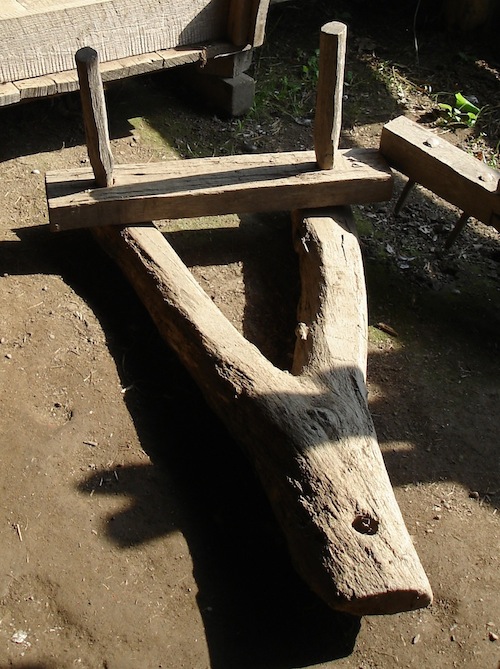
The beauty of craftsmanship can be found in the simplest of gadgets, and what could be simpler than dragging things around on top of a framework of wood from the construction of the farmer’s own hands? (Now that’s farmin’)
By Pa Mac, article, photos, and drawings copyright 2012
